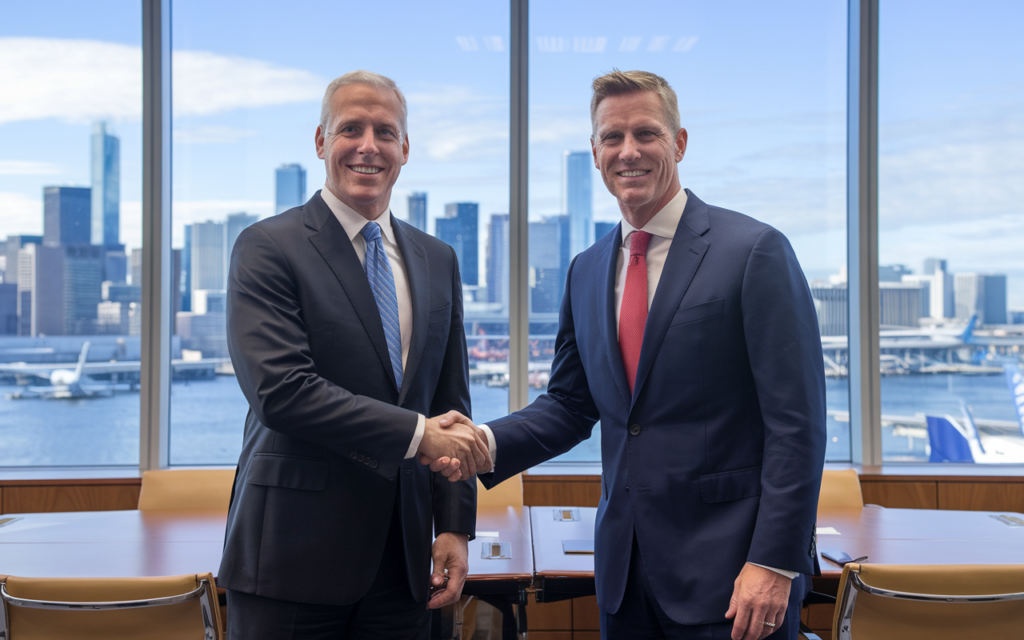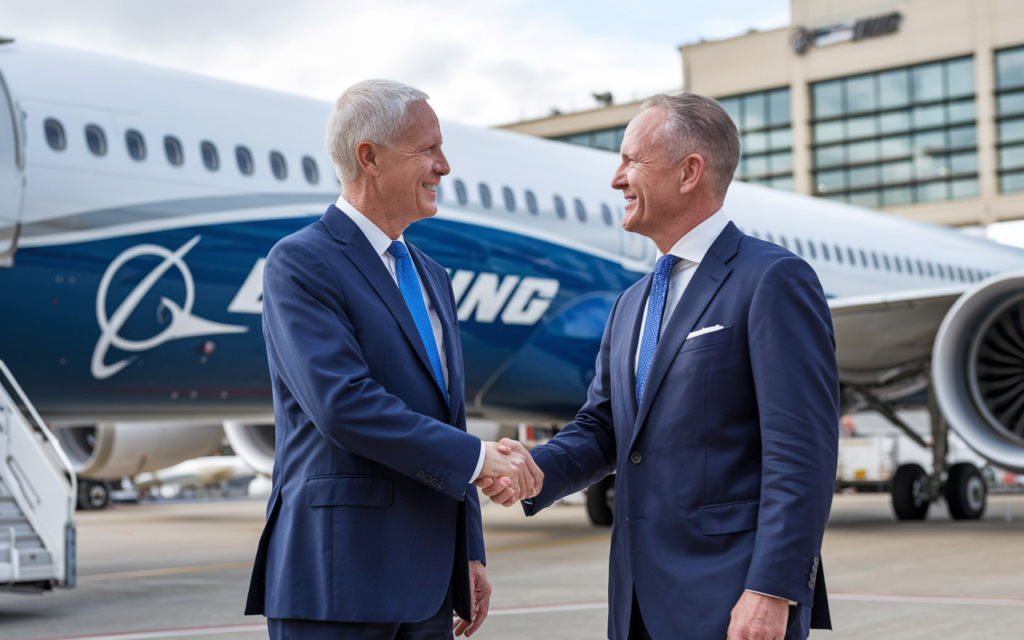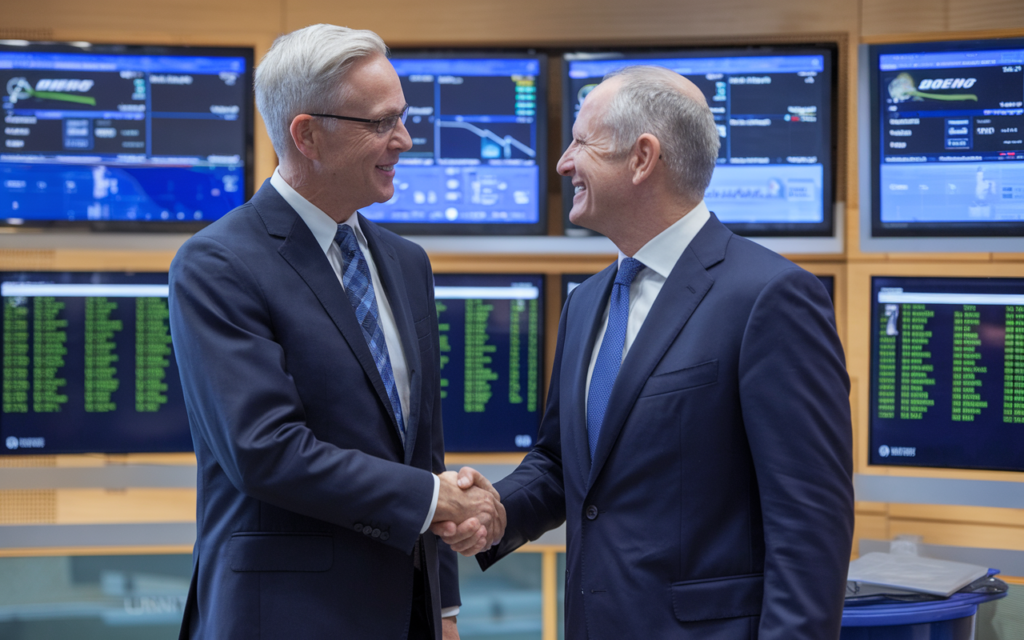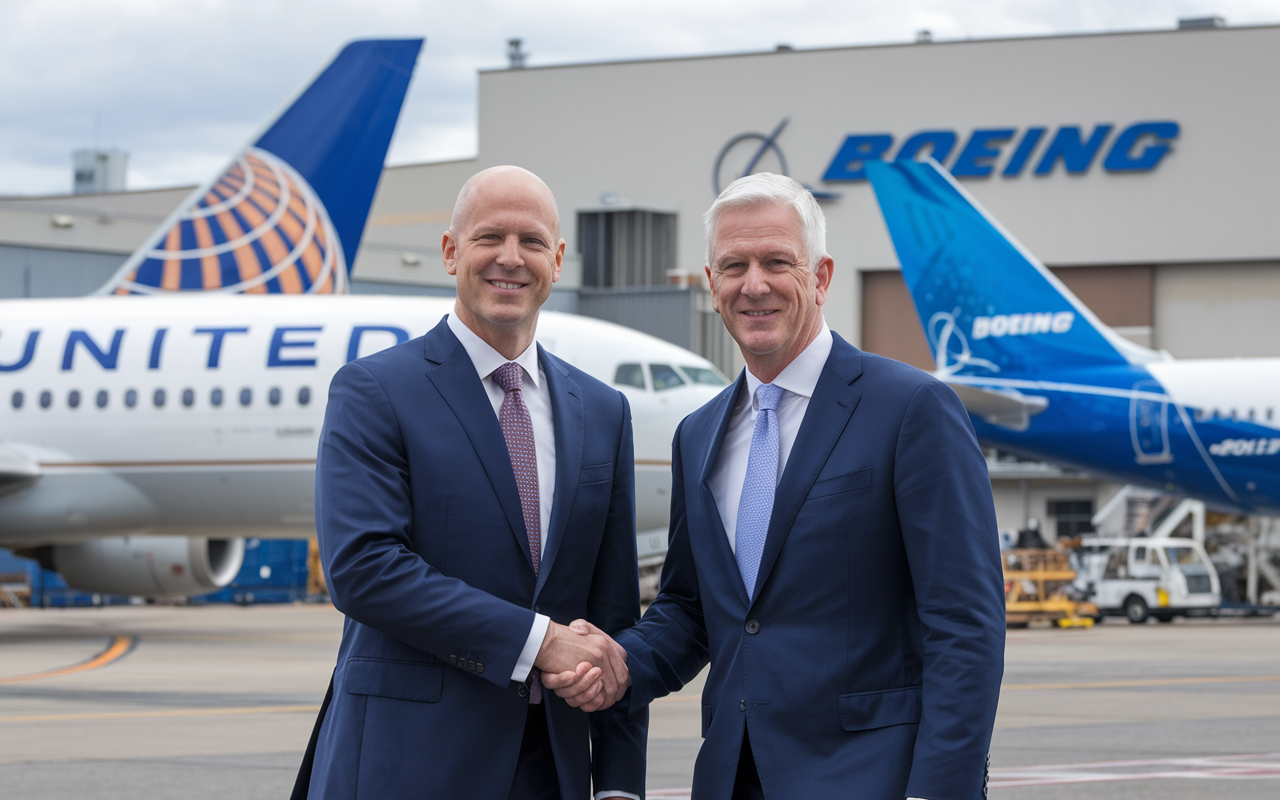Introduction
The aviation industry recently witnessed a significant meeting between United Airlines CEO Kirby and Boeing CEO Ortberg, a development that has sparked interest across business and aviation communities alike. This meeting focused on fortifying industry partnerships, is set to influence the trajectory of airline operations and aircraft manufacturing for years to come. Here, we delve into the details of their discussions and the potential outcomes of this collaboration.
A Meeting Grounded in Innovation
United Airlines CEO Kirby and Boeing CEO Ortberg met to discuss avenues for innovation and efficiency in the aviation sector. As both companies are leaders in their respective domains, their collaboration holds promise for advancing technology and sustainability in air travel. Kirby’s vision for a streamlined, customer-focused airline aligns with Ortberg’s emphasis on manufacturing state-of-the-art aircraft designed for safety and efficiency.
Strengthening Industry Partnerships
The meeting between United Airlines CEO Kirby and Boeing CEO Ortberg wasn’t just a routine discussion. It underscored the importance of robust partnerships in an industry still recovering from the challenges of the pandemic. Both leaders acknowledged that closer collaboration between airlines and manufacturers could ensure smoother operations and better crisis management in the future.

Addressing Supply Chain Challenges
One major topic of discussion was the persistent supply chain disruptions affecting the aviation industry. United Airlines CEO Kirby emphasized the importance of reliable aircraft deliveries, while Boeing CEO Ortberg assured Kirby of their commitment to addressing these challenges. Together, they explored strategies for mitigating delays and ensuring timely production to meet growing passenger demand.
Pioneering Sustainable Aviation
United Airlines CEO Kirby and Boeing CEO Ortberg are united in their commitment to sustainability. The aviation sector faces mounting pressure to reduce its carbon footprint, and both leaders see this as a critical area for innovation. During their meeting, they discussed advancements in sustainable aviation fuel (SAF) and the potential development of next-generation aircraft that consume less fuel and emit fewer greenhouse gases.
A Shared Focus on Customer Experience
Customer satisfaction was another focal point in the dialogue between United Airlines CEO Kirby and Boeing CEO Ortberg. Kirby emphasized the importance of equipping United’s fleet with modern features to enhance passenger comfort. Ortberg shared insights on Boeing’s innovations in cabin design, including quieter cabins and advanced in-flight entertainment systems, which could soon be a standard offering for United Airlines.
Fleet Modernization Plans
Fleet modernization is a priority for United Airlines, and CEO Kirby used this opportunity to discuss future aircraft orders with Boeing CEO Ortberg. The two leaders explored the potential for acquiring next-generation models like the Boeing 787 Dreamliner and 737 MAX. Kirby’s commitment to investing in a modern, fuel-efficient fleet aligns with Ortberg’s vision of delivering technologically advanced airplanes.

Navigating Regulatory Landscapes
United Airlines CEO Kirby and Boeing CEO Ortberg also tackled the complexities of regulatory compliance. As international travel continues to grow, both leaders emphasized the need for alignment with global aviation standards. Their shared goal is to ensure that new aircraft meet stringent safety and environmental regulations without compromising operational efficiency.
Exploring Future Opportunities
Beyond immediate challenges, United Airlines CEO Kirby and Boeing CEO Ortberg discussed long-term opportunities. They explored areas like urban air mobility and the integration of advanced technologies, including AI-driven maintenance systems and autonomous flight capabilities. These innovations could redefine the future of air travel, making it safer, faster, and more efficient.
Crisis Management and Resilience
The pandemic underscored the importance of resilience in the aviation sector. During the meeting, United Airlines CEO Kirby and Boeing CEO Ortberg shared lessons learned from navigating this unprecedented crisis. They emphasized the need for adaptive strategies, robust contingency planning, and enhanced communication between airlines and manufacturers to handle future disruptions better.
Strengthening U.S. Aviation Leadership
Both leaders are committed to maintaining the United States’ position as a global aviation leader. United Airlines CEO Kirby highlighted the critical role of a strong domestic manufacturing base. At the same time, Boeing CEO Ortberg reiterated Boeing’s dedication to supporting U.S. airlines with cutting-edge aircraft and services.
Enhancing Workforce Collaboration
United Airlines CEO Kirby and Boeing CEO Ortberg recognized the importance of investing in their workforce. They discussed joint initiatives for training and upskilling employees to adapt to technological advancements and the evolving demands of the aviation industry. Such efforts will not only benefit their companies but also contribute to the overall growth of the sector.

Supporting Economic Recovery
The meeting between United Airlines CEO Kirby and Boeing CEO Ortberg also had economic implications. By working together, both companies aim to stimulate job creation and contribute to the recovery of the aviation sector, which plays a pivotal role in the global economy.
Conclusion: A Step Towards Progress
The collaboration between United Airlines CEO Kirby and Boeing CEO Ortberg is a testament to the power of industry partnerships. Their shared vision for innovation, sustainability, and customer satisfaction promises to shape the future of aviation, making air travel safer, more efficient, and environmentally friendly.
As we look ahead, the synergy between these two leaders is expected to drive positive change in the aviation sector. Their combined efforts could pave the way for groundbreaking advancements, benefiting not just their respective companies but the entire industry.
FAQ
What was the reason for the gathering between United Airlines CEO Kirby and Boeing CEO Ortberg?
The meeting aimed to strengthen industry partnerships, address supply chain challenges, discuss sustainability, and explore advancements in aviation technology.
How do United Airlines and Boeing plan to address supply chain issues?
United Airlines CEO Kirby and Boeing CEO Ortberg discussed strategies to mitigate delays and ensure timely aircraft production to meet passenger demand.
What sustainability initiatives were discussed?
The leaders focused on sustainable aviation fuel (SAF) and the development of next-generation, fuel-efficient aircraft to reduce the aviation industry’s carbon footprint.
How will this collaboration benefit passengers?
The partnership aims to enhance customer experience by introducing modern aircraft with advanced features like quieter cabins and improved in-flight entertainment.
Are there plans for fleet modernization?
Yes, United Airlines CEO Kirby and Boeing CEO Ortberg discussed potential orders for aircraft such as the Boeing 787 Dreamliner and 737 MAX to modernize United’s fleet.
What are the long-term opportunities discussed?
The discussion included urban air mobility, AI-driven maintenance systems, and autonomous flight technologies that could transform the future of air travel.
How does this meeting impact U.S. aviation leadership?
Both leaders emphasized the importance of maintaining the United States’ global leadership in aviation through innovation and a strong domestic manufacturing base.
Did they discuss workforce development?
Yes, they highlighted joint initiatives for training and upskilling employees to adapt to technological advancements in the aviation sector.
What are the economic implications of this collaboration?
The partnership is expected to stimulate job creation and contribute to the economic recovery of the aviation sector post-pandemic.
Why is this meeting significant for the aviation industry?
It represents a collaborative effort to address key challenges, innovate for the future, and ensure sustainable growth in aviation.


